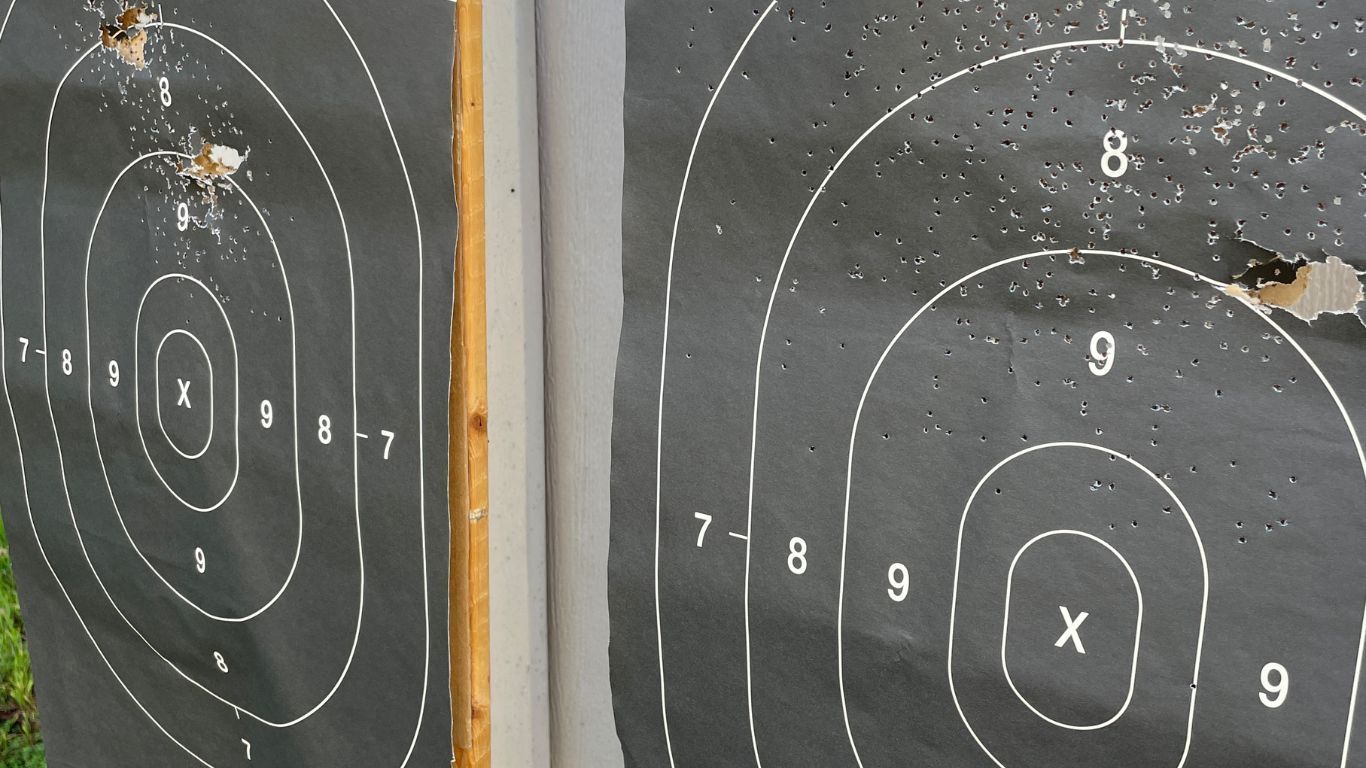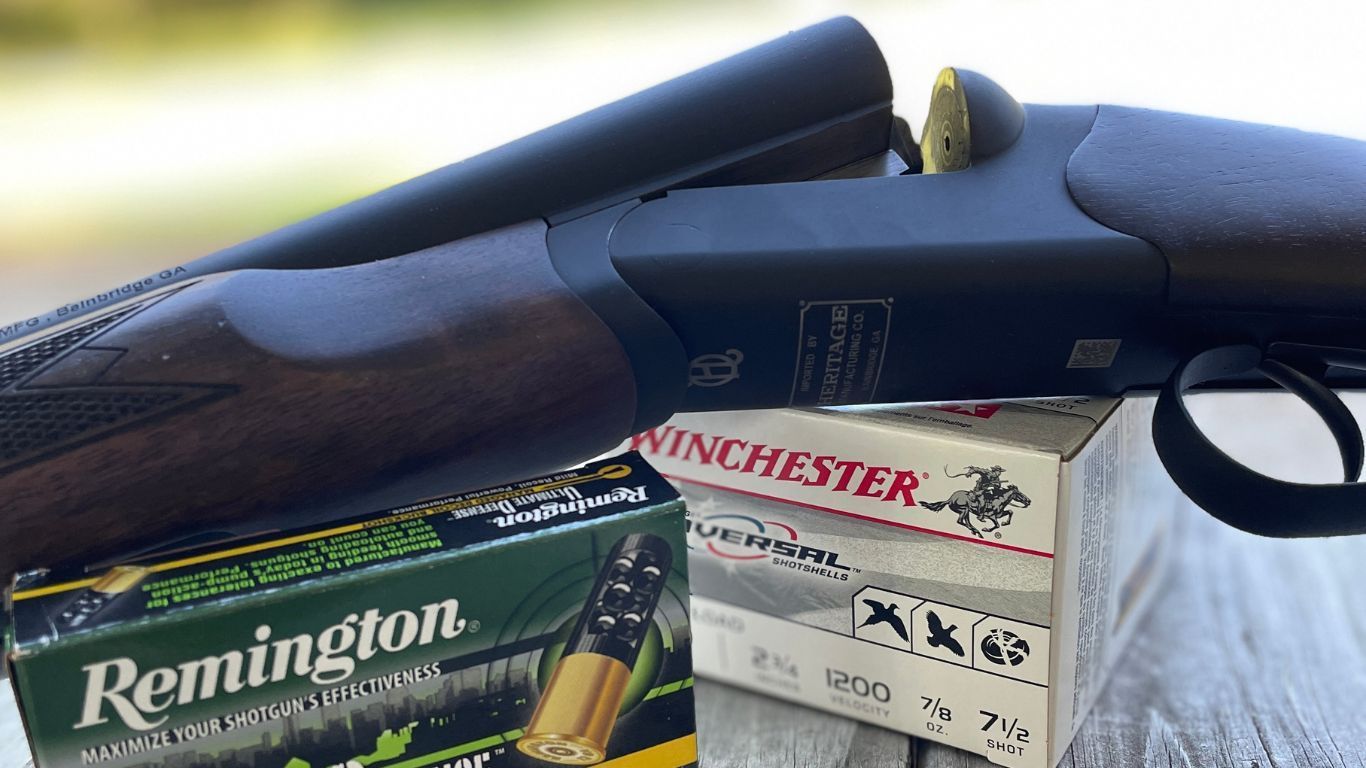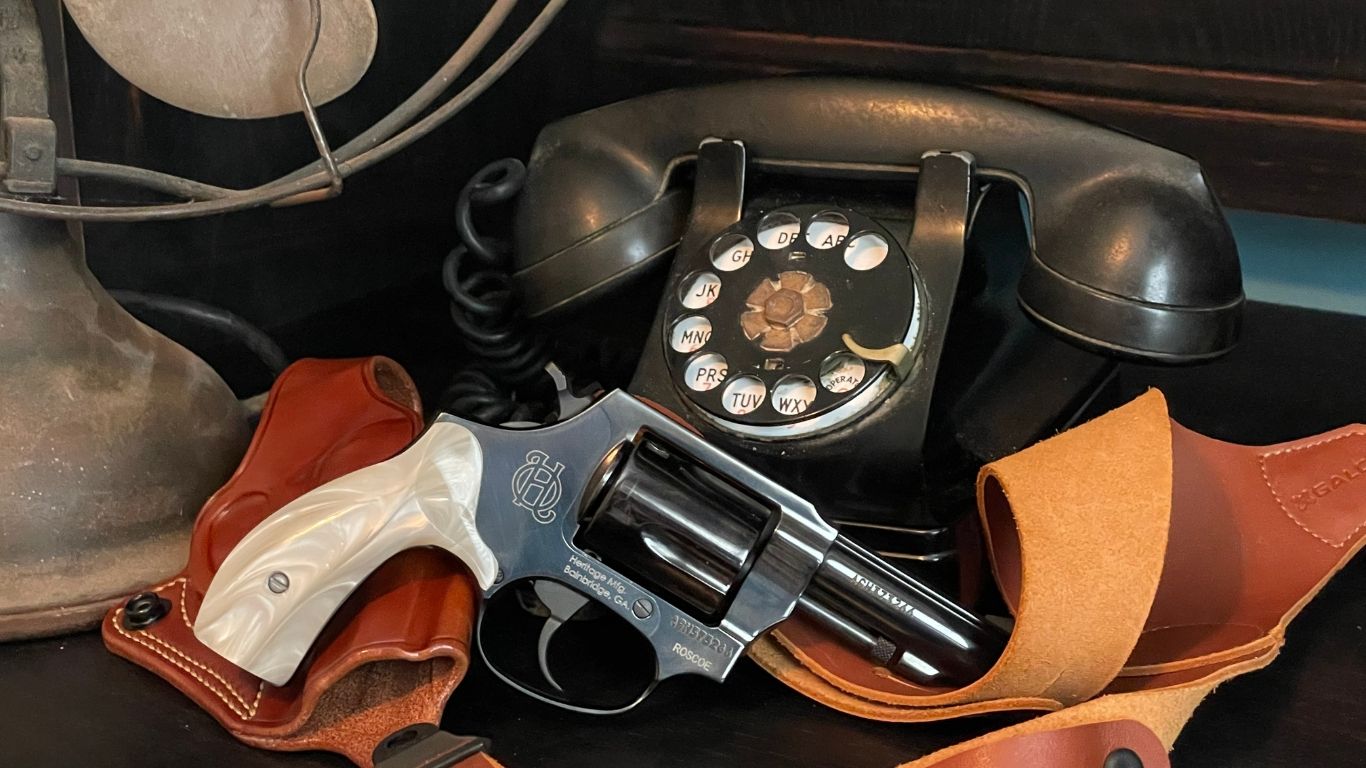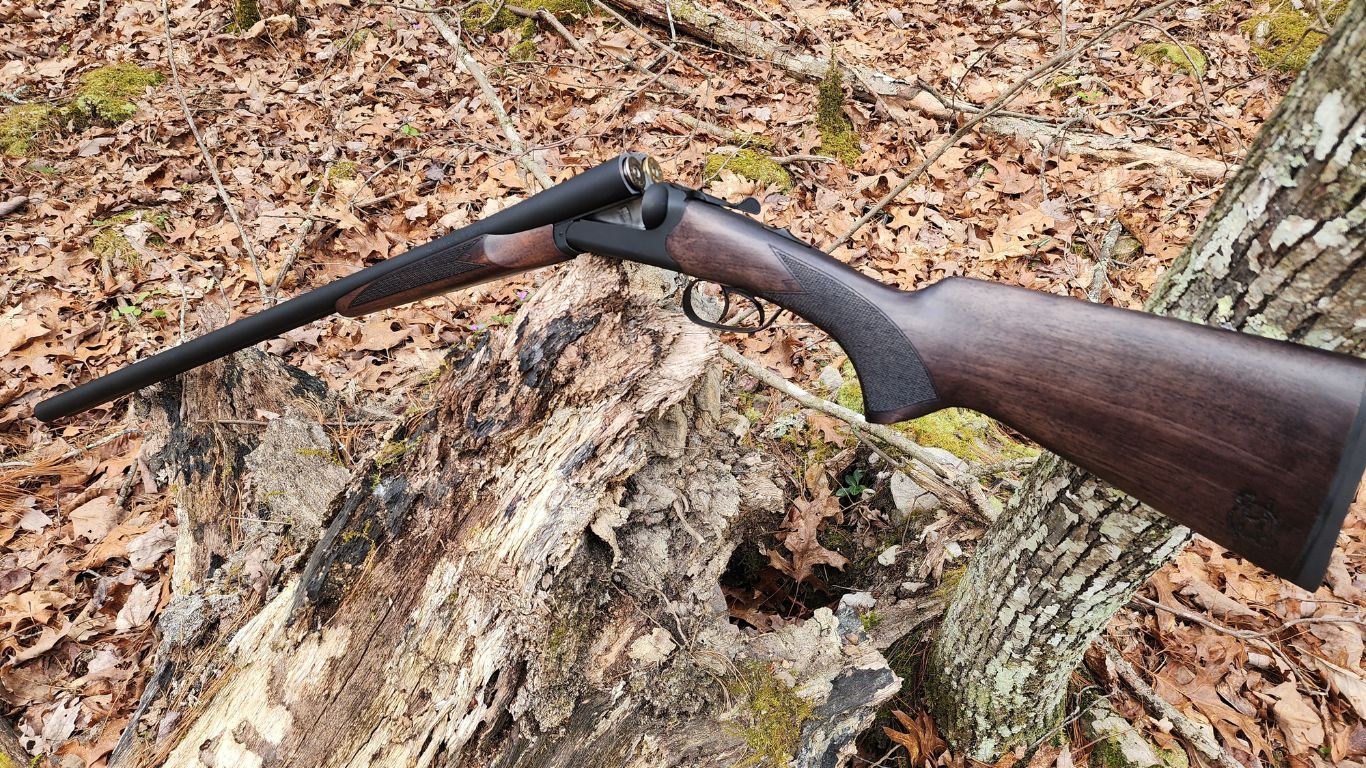I received a Heritage Badlander in 20 gauge this summer to shoot. This shotgun is an addition to Heritage’s lineup of guns, which include re-creations of vintage revolvers, carbines and lever-action rifles. The Badlander series for shotguns comes in 12 and .410 gauges, as well. Of course, when I first got the shotgun, I checked it over, read the owner’s manual, and cleaned it. I ran it through some paces on the range – shooting static – at different distances, but I wanted to put it on the move.
After all, not all live targets stand still. Whether a target is four-legged or two-legged, you need to understand how a gun, such as this one, moves so that you can either defend yourself properly or knock down a rabbit, coyote or other game. As for two-legged adversaries, you’ll want to be able to engage one, or worst case scenario, two at one time, that moves toward you while you are getting off the “X.”
With its short overall length of 34.85 inches and resulting weight distribution, the double-barreled Badlander does not feel or swing like a standard trap, skeet, pheasant or duck shotgun. Because of its different balance you’ll need to make sure your point-of-aim works for snap shots at stationary targets, or swing shots at moving targets with this gun.
Take a closer look at the Badlander’s specs, which include the following:
But, how, you may ask, do you work on moving target practice?
You could go to a sporting clays range and specifically ask for them to throw you “rabbits.” Or, if your range permits it, you could have someone roll out or throw out ground clays that hop, skip and jump away from you. This is where you’ll notice a huge difference between a sporting shotgun and the Badlander, and you’ll need to adjust how you lead or point the gun. That takes some practice.
After all, because of its handy length and weight, this type of a gun used to ride along on stagecoach journeys – usually in the hands of the fellow riding “shotgun” – and I’m pretty sure it wasn’t just used to ward off robbers. If there were some rabbits along the way, perhaps these types of shotguns came in handy for getting “fast food” along the way. Or, maybe there was a snake or two that bit the dust alongside the trail.
For the other types of predators, the ones that mean to harm you or your loved ones … it’s always good to figure out at what distance you’d use the gun in your home, or outside, like from your truck or from horseback. Practice at those distances, and also, double up on your targets.
That means, put two targets – I used silhouette targets on NRA D1 backers – side-by-side a few feet apart, and at different distances away from you, and practice getting off two shots, left to right and then, right to left. You’ll be dealing with two triggers, as well. Since it is a side-by-side, so you won’t see an up-and-down recoil effect on the target as you might from a double barrel, over-and-under shotgun, so if you are used to upland hunting with one you’ll have to adjust for the Badlander.
After the side-by-side practice, change it up and place one of the targets closer to you, but to the side of the other one. Now, you’ll want to take two shots – back to front or front to back. Back to front means the assailant is coming toward you, and front to back means there are two.
My Badlander was stiff to break-open, at first, but after about 50 rounds, it loosened up. This would be a good time to introduce fast reloading practices, as well – but not sooner, before the action gets easier to open.
As for ammunition, I shot Remington Ultimate Defense Buckshot and Winchester Universal shotshells, #7 ½ shot, 2 ¾-inch shells, 1200 feet per second velocity. I like to start with the smaller shot size for breaking the gun in, and for overall practice. I then transitioned to the self-defense loads because you should always use your actual personal defense ammunition in a gun while practicing, so that you know how it performs. That doesn’t mean, though, that you have to blow through a lot of this expensive ammo for training.
I’m looking forward to introducing this gun to friends and family over the upcoming holidays, when we get on out on the range for some good old shoots. I believe the women who shoot it will appreciate its weight, balance and accuracy. I think it would be a great gun for youth shooters, and I also appreciate its history.
Many people might just want to collect this gun, but I believe it should be used, as well. There’s something special about using a nostalgic gun for everyday purposes.
About the Author
Barbara Baird is a freelance writer in travel and outdoor markets. Before launching “Women’s Outdoor News,” aka The WON, in 2008, she worked as a newspaper and then magazine editor. Her bylines can be found at “Field and Stream,” “American Hunter,” “Outdoor Life,” “America’s 1st Freedom,” “Fly Fisherman,” AAA publications, “St. Louis Post-Dispatch,” “Columbia (Mo.) Tribune,” “Springfield (Mo.) News-Leader,” “SHOT Business,” “SHOT Daily,” “Shooting Illustrated,” “Show Me Missouri” and a host of other magazines and newspapers. She writes a popular travel blog, based on a former self-syndicated newspaper column, “The Accidental Ozarkian.” She recently published “Milling Around: Exploring 26 Mills in the Missouri Ozarks.”
After all, not all live targets stand still. Whether a target is four-legged or two-legged, you need to understand how a gun, such as this one, moves so that you can either defend yourself properly or knock down a rabbit, coyote or other game. As for two-legged adversaries, you’ll want to be able to engage one, or worst case scenario, two at one time, that moves toward you while you are getting off the “X.”
With its short overall length of 34.85 inches and resulting weight distribution, the double-barreled Badlander does not feel or swing like a standard trap, skeet, pheasant or duck shotgun. Because of its different balance you’ll need to make sure your point-of-aim works for snap shots at stationary targets, or swing shots at moving targets with this gun.
Take a closer look at the Badlander’s specs, which include the following:
- Front bead sight
- 18.5-inch barrel
- 6.87-inch height
- 96-ounce weight (20 gauge, unloaded)
- 34.85-inch overall length
- 2.06-inch overall width (20 gauge)
- Alloy steel frame and barrel
- Black chrome frame and barrel finish
- Double trigger (one for each barrel)
- Tang safety
But, how, you may ask, do you work on moving target practice?
You could go to a sporting clays range and specifically ask for them to throw you “rabbits.” Or, if your range permits it, you could have someone roll out or throw out ground clays that hop, skip and jump away from you. This is where you’ll notice a huge difference between a sporting shotgun and the Badlander, and you’ll need to adjust how you lead or point the gun. That takes some practice.
After all, because of its handy length and weight, this type of a gun used to ride along on stagecoach journeys – usually in the hands of the fellow riding “shotgun” – and I’m pretty sure it wasn’t just used to ward off robbers. If there were some rabbits along the way, perhaps these types of shotguns came in handy for getting “fast food” along the way. Or, maybe there was a snake or two that bit the dust alongside the trail.
For the other types of predators, the ones that mean to harm you or your loved ones … it’s always good to figure out at what distance you’d use the gun in your home, or outside, like from your truck or from horseback. Practice at those distances, and also, double up on your targets.
That means, put two targets – I used silhouette targets on NRA D1 backers – side-by-side a few feet apart, and at different distances away from you, and practice getting off two shots, left to right and then, right to left. You’ll be dealing with two triggers, as well. Since it is a side-by-side, so you won’t see an up-and-down recoil effect on the target as you might from a double barrel, over-and-under shotgun, so if you are used to upland hunting with one you’ll have to adjust for the Badlander.
After the side-by-side practice, change it up and place one of the targets closer to you, but to the side of the other one. Now, you’ll want to take two shots – back to front or front to back. Back to front means the assailant is coming toward you, and front to back means there are two.
My Badlander was stiff to break-open, at first, but after about 50 rounds, it loosened up. This would be a good time to introduce fast reloading practices, as well – but not sooner, before the action gets easier to open.
As for ammunition, I shot Remington Ultimate Defense Buckshot and Winchester Universal shotshells, #7 ½ shot, 2 ¾-inch shells, 1200 feet per second velocity. I like to start with the smaller shot size for breaking the gun in, and for overall practice. I then transitioned to the self-defense loads because you should always use your actual personal defense ammunition in a gun while practicing, so that you know how it performs. That doesn’t mean, though, that you have to blow through a lot of this expensive ammo for training.
I’m looking forward to introducing this gun to friends and family over the upcoming holidays, when we get on out on the range for some good old shoots. I believe the women who shoot it will appreciate its weight, balance and accuracy. I think it would be a great gun for youth shooters, and I also appreciate its history.
Many people might just want to collect this gun, but I believe it should be used, as well. There’s something special about using a nostalgic gun for everyday purposes.
About the Author
Barbara Baird is a freelance writer in travel and outdoor markets. Before launching “Women’s Outdoor News,” aka The WON, in 2008, she worked as a newspaper and then magazine editor. Her bylines can be found at “Field and Stream,” “American Hunter,” “Outdoor Life,” “America’s 1st Freedom,” “Fly Fisherman,” AAA publications, “St. Louis Post-Dispatch,” “Columbia (Mo.) Tribune,” “Springfield (Mo.) News-Leader,” “SHOT Business,” “SHOT Daily,” “Shooting Illustrated,” “Show Me Missouri” and a host of other magazines and newspapers. She writes a popular travel blog, based on a former self-syndicated newspaper column, “The Accidental Ozarkian.” She recently published “Milling Around: Exploring 26 Mills in the Missouri Ozarks.”















